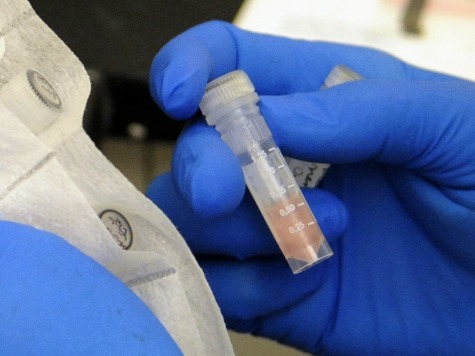Someday soon, you will go to the doctor’s office and the doctor will know exactly what’s wrong with you. Indeed, most likely, you, and your doctor, will have been tipped off by an app–maybe an app in your clothing.
If you have a tumor, for example, not only will the doctor know it’s a tumor, but will also know the exact type and how to target it. After all, therapy against disease is an equation between two chemistries–the chemistry of the medicine, and the chemistry of the patient. In the healthier future to come, each medical equation will be as unique as a snowflake.
One extraordinarily articulate exponent of this new vision of personalized medicine is Dr. Ted Driscoll, a Director of Claremont Creek Ventures in Oakland, CA. Driscoll sees the dawning of personalized medicine happening now and is busy investing in ideas, products, and companies that make that possible.
If Driscoll’s vision comes true–or more precisely, if it is allowed to come true–more and more people will live to the maximum life expectancy. That is, fewer people will die in their thirties because we’ll have caught those diseases–giving people a “new normal” life span of perhaps 100. This new world order effectively increases productivity, lessens costs that aren’t covered by healthcare and decreases government spending on debilitating and deadly diseases.
We can quickly see that the way Driscoll approaches healthcare is profoundly different from the way that Washington, D.C. approaches healthcare. Indeed, the most striking thing about our current healthcare system is the gap between the politics of healthcare and the potential of medicine.
Today, politicians seem content to talk about healthcare as though the big issue is making sure that each American has a piece of paper with the word “insurance” written on it. By contrast, medical visionaries describe a bright future in which patients get a cure targeted directly to their medical need. No more one-size-fits-all; the new paradigm will be: one medicine, one patient.
Today, patients battling with disease live in hope for an effective treatment or cure. The success of the pharmaceutical industry delivers on that hope by transforming, for example, cancer into a treatable condition, the way we have successfully reduced the impact of cardiovascular disease. Today heart disease is no longer the routine killer of people in their 50s that it once was.
However, there is still much to be done. Thanks to the pharma industry, today over 5,000 medicines are in development globally. Yet in the past ten years, the FDA has approved only 300 new medicines. These medical innovations have enabled people to live long and healthier lives–and that’s what gives patients hope. But we can see the gap: 5,000 new medicines; 300 approvals.
Driscoll emphasizes that much of the future capacity for drug-making will come from Silicon Valley. We are now at the edge of a fusion of familiar labs-and-white-mice approach and the new cyber-enhanced Big Data approach to medicine. Though seemingly futuristic, Silicon Valley’s use of Big Data and human genome holds tremendous promise as the cost is dropping faster than Moore’s Law. In other words, we could get the best of both worlds: high-tech cures.
Driscoll speaks hopefully of being at the “threshold of a huge revolution in medicine; we’re in a renaissance effectively, looking at the actual molecular mechanism of disease and treating them specifically, uniquely for you and me.” That is, we’re moving away from blockbuster drugs.
“It used to be five or ten years ago” Driscoll explains, “that the pharmaceutical industry had to basically come up with a drug and then do it on a thousand patients to see if they’ve got a positive result statistically.”
The traditional way of coming up with innovative medicines was to think of patients as being all the same to find an average improvement that would justify a drug: i.e., blockbusters. However, today, Driscoll says, “looking for an average response off of a thousand people no longer makes sense.” If every patient is different, there is no average.
So we can see, the business model and way of discovering treatments has changed from blockbuster drugs that aimed to treat the many on a one-size-fits all basis, to targeted drugs aiming to treat individuals as individuals.
Washington should take notice: the healthcare discussion should be about research, cures, hope, and promise of new medical R&D–not merely insurance.
With the hope that our politics, economy and culture are receptive to the power of Big Data, sharing information, and continued R&D efforts by the pharma industry Driscoll’s vision of our medical future is a reality. Looking through the crystal ball 25 or 50 years down the line, after a visit to the doctor about a particular ailment:
“The doctor is not going to write a specific drug on the prescription form or fax it to the pharmacist. He’s going to fax a general description of the drug that I need to get and when I go the pharmacy the pharmacist is going to look at the genetic markers in my electronic medical record and figure out which from a broad group of drugs I should get for my particular genome, from my particular metabolism.”
Politics as Usual vs. the Potential of Personalization. That’s the choice we face.
Abigail T. Fox is a freelance writer and photographer. Follow her at @AbigailTFox

COMMENTS
Please let us know if you're having issues with commenting.